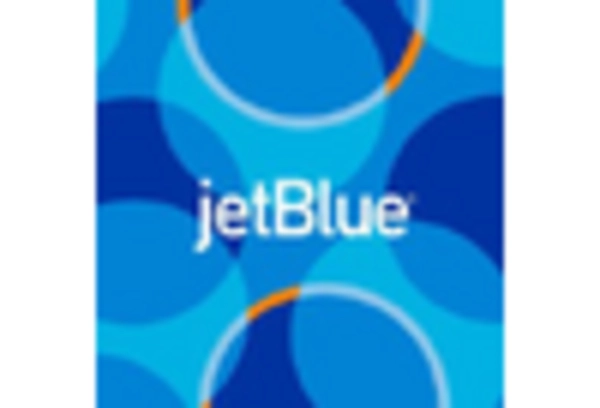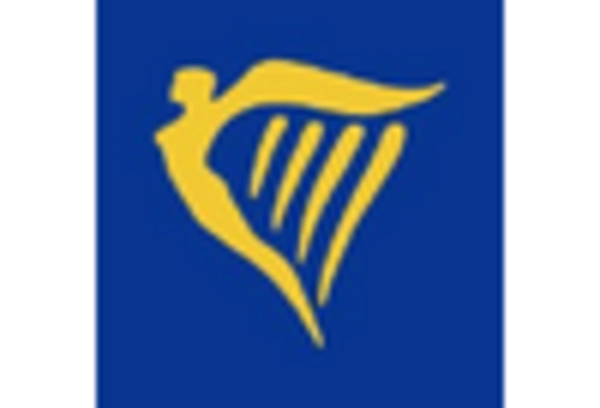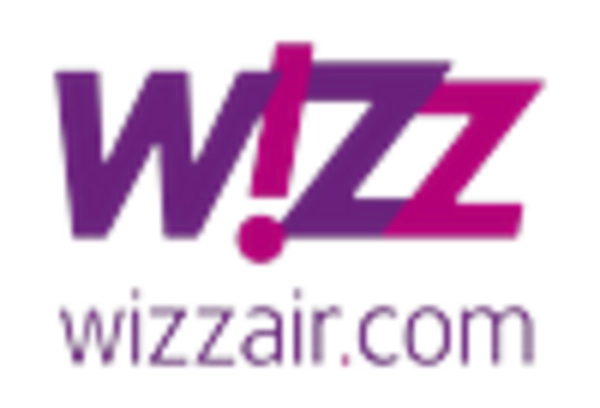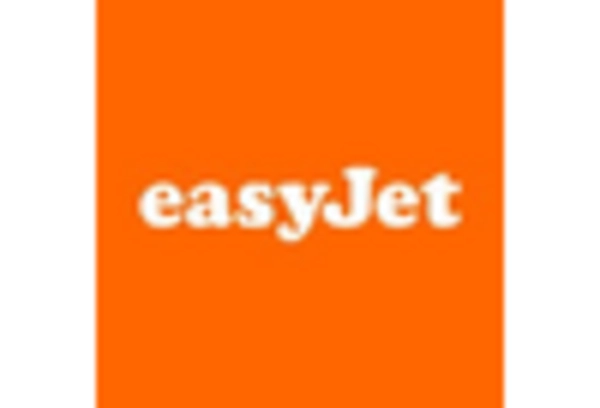Rising Demand for Affordable Travel
The low cost-carrier market is experiencing a notable surge in demand for affordable travel options among consumers. As economic pressures persist, travelers increasingly seek budget-friendly alternatives to traditional airlines. This trend is reflected in the growing number of passengers opting for low-cost carriers, which accounted for approximately 40% of domestic air travel in the US in 2025. The appeal of lower fares, coupled with the ability to customize travel experiences, positions low cost-carrier market players favorably in a competitive landscape. Furthermore, the increasing prevalence of online booking platforms facilitates easy access to these budget options, further driving demand. As consumers prioritize cost savings, the low cost-carrier market is likely to continue expanding, attracting a diverse range of travelers, from leisure to business, thereby reshaping the overall travel landscape.
Increased Competition Among Airlines
The low cost-carrier market is witnessing intensified competition among airlines, which is reshaping pricing strategies and service offerings. With numerous players entering the market, airlines are compelled to innovate and differentiate themselves to capture market share. This competitive environment has led to fare reductions, with average ticket prices dropping by approximately 15% over the past year. Additionally, airlines are enhancing their services, such as offering more flexible booking options and improved customer service, to attract price-sensitive travelers. The proliferation of low-cost carriers has also prompted traditional airlines to reevaluate their pricing structures, further benefiting consumers. As competition continues to escalate, the low cost-carrier market is likely to see sustained growth, with airlines striving to balance affordability and quality to meet evolving consumer expectations.
Shifts in Consumer Travel Preferences
The low cost-carrier market is adapting to shifts in consumer travel preferences, which are increasingly influenced by changing lifestyles and values. Travelers are now prioritizing experiences over luxury, leading to a greater demand for budget travel options. This shift is evident in the rising popularity of short-haul flights and weekend getaways, which align with the offerings of low-cost carriers. In 2025, approximately 60% of travelers indicated a preference for low-cost options for domestic travel, reflecting a broader trend towards value-oriented choices. Additionally, the growing awareness of environmental sustainability is prompting consumers to seek airlines that offer affordable yet eco-friendly travel solutions. As these preferences evolve, the low cost-carrier market is likely to continue adapting its strategies to meet the needs of a diverse and cost-conscious traveler demographic.
Expansion of Ancillary Revenue Streams
The low cost-carrier market is increasingly focusing on the expansion of ancillary revenue streams to bolster profitability. Airlines are diversifying their income sources by offering additional services such as priority boarding, in-flight meals, and baggage fees. In 2025, ancillary revenues accounted for nearly 30% of total revenues for low-cost carriers, highlighting the importance of these offerings in maintaining financial viability. This trend allows airlines to keep base fares low while still generating substantial income. Moreover, the introduction of loyalty programs and partnerships with hotels and car rental services further enhances revenue potential. As the low cost-carrier market evolves, the ability to effectively monetize ancillary services will likely play a crucial role in sustaining growth and competitiveness.
Technological Integration for Operational Efficiency
The low cost-carrier market is increasingly leveraging technological advancements to enhance operational efficiency and reduce costs. Airlines are adopting innovative solutions such as automated check-in systems, mobile boarding passes, and advanced data analytics to streamline operations. These technologies not only improve the customer experience but also contribute to significant cost savings. For instance, the implementation of data analytics has enabled airlines to optimize flight schedules and reduce fuel consumption, which is a major expense. In 2025, airlines that effectively integrated technology reported a 10% reduction in operational costs. As the low cost-carrier market continues to embrace technological integration, it is likely to see improved efficiency and profitability, positioning itself favorably against traditional carriers.

















Leave a Comment